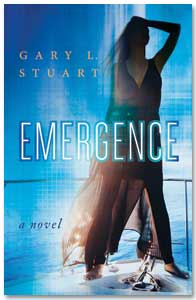Do blurbs have ethics? Why? A blurb is an inanimate thing. It is neither moral nor ethical because, well just because it’s inanimate. You know, not alive, especially not in the manner of animals and humans. It is, you know, like a stone or a brick. Even dumber than. It’s the act of blurbing that draws ethical attention. Some of my writer friends treat blurbs as it they were favors. A few offer to either read my books, or blurb them, but not both.
A blurb, however inanimate or zombie-like, is a literary device used by most writers. We should blurb only when we know of what we write and not based on returning a favor to a fellow scribbler. The etymology of “blurb” is interesting. Coined by Gelett Burgess as a noun in 1907, it is on the tip of every writer’s tongue today. We hope for good reviews but often settle for a catchy blurb.
History has given us spectacular blurbs. Homer’s “The Odyssey” drew this famous blurb. “After his breakout success with The Illiad, the blind poet shows no signs of second-epic syndrome. Sprint to your closest scribe and snag a copy before the papyrus runs out!” The blurb’s author added a helpful note—”also available on e-papyrus.”[1]
Leo Tolstoy’s “War and Peace,” got a piercing blurb from Fyodor Dostoevsky. “I’m not gonna lie: after reading ‘War,’ I thought Count Tolstoy couldn’t keep up the pace. But ‘Peace’ is equally as rocking. Definitely the greatest novelist ’til Franzen.”[2]
It is important to differentiate between book blurbs and book reviews. A book review is a literary criticism that expresses the reader’s opinion about the book’s content. It might be flattering. An endorsement, colloquially known as a book blurb or testimonial, is short and always flattering. Unfavorable blurbs never make the traveling team.
So, what ethical norms govern blurb writing? Author Dave Hood has penned a solid list that covers all creative writing, not just blurbs. “The intent of the writer must be to write honestly and truthfully. The writer must not change facts, distort facts, fabricate facts, tell lies, or mislead the reader. Changing a story by adding significant, false details or events that never happened is writing fiction, not creative nonfiction. And if readers discover they have been deceived, the writer will lose credibility and a reading audience. And so, when writing creative nonfiction, such as a personal essay, memoir, or literary journalistic essay, the writer must strive to tell the truth the best he/she can. As well, the writer must not fabricate events or experiences.”[3]
The core ethical imperative in blurb writing is truth. But truth is often elusive. Truth in the literal sense is correct, literal recounting of events that happened. Story-truth is imbued with fictional or exaggerated elements. Story-truth is real, because its sensationalized features more fully convey to the reader the emotional power of a book. In context, a blurb might not be true in the literal sense, but like all stories, a blurb has to do its job—which is to endorse and help sell the book.
A good way to judge a blurb in ethical terms is to ask whether the blubber believes what he/she wrote. The writer cannot lie in nonfiction books, but can in fiction—literally and figuratively. The blubber’s endorsement should follow ethical suit. Don’t lie about the book. Tell the emotional truth as you see it.
Another ethical test in blurb writing is context. The setting of a blurb is as important as is the context of the book itself. Whether on the cover, or deep inside the text, contextual setting is vital. In both cases context provides meaning and clarity to the intended message—the blurb.
The art and reality of blurbing is controversial. “In a recent essay on the controversial publication of American Dirt, critic Christian Lorentzen questioned the validity of the glowing blurbs that the book received from such literary luminaries as Stephen King, Sandra Cisneros, and John Grisham. ‘The blurb system is corrupt on its face,’ Lorentzen writes. ‘Blurbs may be earnest and true, but they are always the product of favors being called in: from authors’ friends, from agents’ other clients, from publishers’ other authors. Everyone knows this.’”[4]
In the 1980s, Spy ran a regular feature called “Logrolling in Our Time” which exposed writers who wrote blurbs for one another’s books.[5]
Madame Wikipedia’s page on Blurbs, notes how blurbs have grown over the years. “Prominent writers can receive large volumes of blurb requests from aspiring authors. This has led some writers to turn down such requests as a matter of policy. For example, Gary Shteyngart announced in The New Yorker that he would no longer write blurbs, except for certain writers with whom he had a professional or personal connection. Neil Gaiman reports that ‘Every now and again, I stop doing blurbs…. The hiatus lasts for a year or two, and then I feel guilty, or someone asks me at the right time, and I relent.” Jacob M. Appel reports that he received fifteen to twenty blurb requests per week and tackles ‘as many as I can.’”[6]
Blurbing is alive, if not well in 2023. While its detractors have a point, the practice of front-page blubbing is evident on a large percentage of Amazon books every day. Most are exactly what they claim to be—endorsements. None of us write in a vacuum—we write to publish. Publishing, even for best sellers, is inherently public—it needs endorsing like grass needs water. Be careful you don’t start an ethical flood.
[1] https://therumpus.net/2014/07/09/great-blurbs-in-history-a-selection/
[2] Ibid.
[3] https://davehood59.wordpress.com/?s=ethics&submit=
[4] https://themillions.com/2023/03/beware-of-blurbs.html
[5] “Spy: The Funny Years”. Variety. 10 December 2006. Retrieved 25 August 2014.
[6] https://en.wikipedia.org/wiki/Blurb

I am an author and a part-time lawyer with a focus on ethics and professional discipline. I teach creative writing and ethics to law students at Arizona State University. Read my bio.
If you have an important story you want told, you can commission me to write it for you. Learn how.






 I am an author and a part-time lawyer with a focus on ethics and professional discipline. I teach creative writing and ethics to law students at Arizona State University.
I am an author and a part-time lawyer with a focus on ethics and professional discipline. I teach creative writing and ethics to law students at Arizona State University.  My latest novel is Emergence, the sequel to Let’s Disappear.
My latest novel is Emergence, the sequel to Let’s Disappear.  If you have an important story you want told, you can commission me to write it for you.
If you have an important story you want told, you can commission me to write it for you.